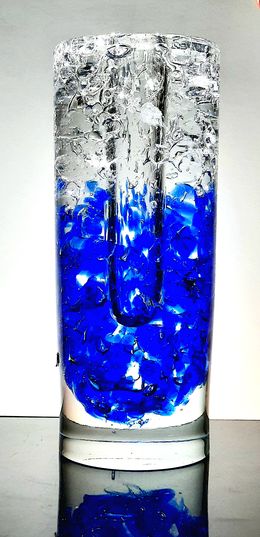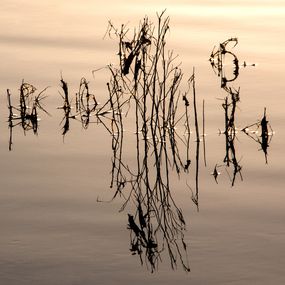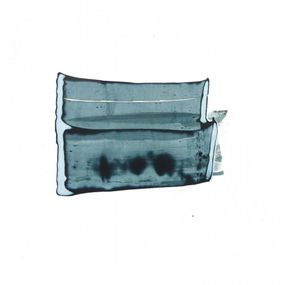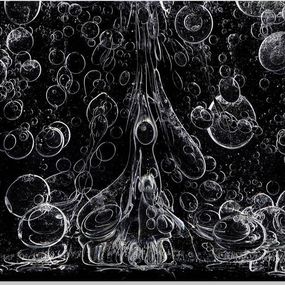
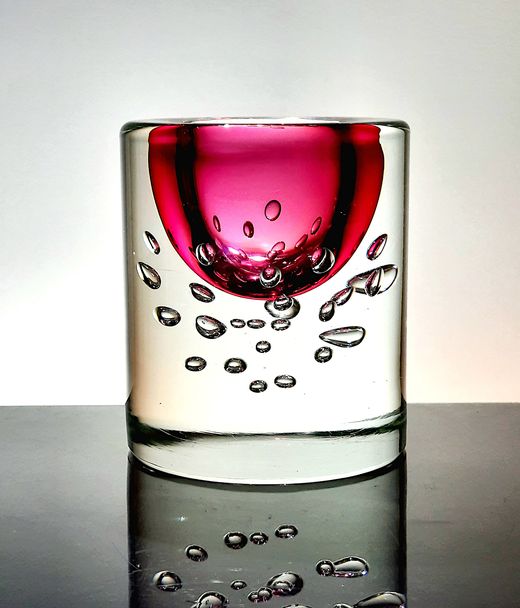
Biography
He comes from a family of glass grinders. He came into contact with glassmaking at an early age, in his father's grinding workshop, who worked for the Inwald Poděbradech glassworks.
"It was my dad who taught me how to sharpen. And I also learned a certain diligence and determination from him. Everything was really enhanced after that by Břetislav Novák at the school in Železné Brod, who was my workshop teacher. I never thought that I could do some other field. It seemed perfectly natural to me to continue my father's effort and desire."
In the years 1953–1957, he studied at the Glass Industry School in Železné Brod, glass grinding department. In the years 1966–1970, he continued to study history at the Faculty of Arts of Charles University in Prague.
In the years 1966–1969, he worked in the Glass Grinding Studio of the Center for Arts and Crafts in Prague, initially as a grinder, and finally as the head of the grinding studio.
In the fall of 1969, he became the director of the glass factory in Škrdlovice, whose production he maintained at a high level and turned it into an important center of artistic glass craft. He worked here until 1987.[3][4][5] In the years 1970–1973, 1977–1980 and 1983, he held a glass symposium here, which was followed by the Vysočina Glass Symposium in 2012.
In the late 1980s, he led the glass studio at the Academy of Applied Arts in Prague. Some of his students at the time (for example, Michal Machat) evaluated him years later as an exponent of the Communist Party of the Czech Republic who was appointed to the school without much authority and respect from the students. He left the management of the studio after the Velvet Revolution, when he faced criticism from the student strike committee.[6]
In the 1986 elections, he sat for the KSČ in the People's Assembly (constituency no. 108 - Žďár nad Sázavou, South Moravian Region). He remained in the Federal Assembly until the beginning of 1990, when he resigned his mandate as part of the process of co-optation into the Federal Assembly after the Velvet Revolution.[7][8]
In 1990, he founded his own glass factory in Karlov near Žďár nad Sázavou, when he bought the building of the former village school and rebuilt it into a glass workshop (Sklářská huť AGS Jaroslav Svoboda).[3]
In the building of today's glass factory, there was a school until 1957, then a shop, and then the building fell into disrepair. The derelict and dilapidated building needed to be completely repaired, including electricity and gas supply. At first, only a grinding shop with a glass shop was built. In April 1993, the operation of the two-pan furnace was started. In the 1990s, there was a big boom in Czech glass, business partners were all over the world, from Japan to Singapore to the USA and, of course, all over Europe and the country. That is why the construction of a new hall with a six-pan furnace was started in May 1995, in which melting started already on 29 November 1995. Fourteen master glassblowers worked at the furnace, and the total number of employees exceeded one hundred and twenty. Since 2001, the number of customers has gradually decreased, also due to the terrorist attack in the USA. Layoffs and production cuts began. The large hall currently (2021) houses a gallery and glass shop, and production has moved to one small one-pan furnace with three glassmakers and two grinders.






